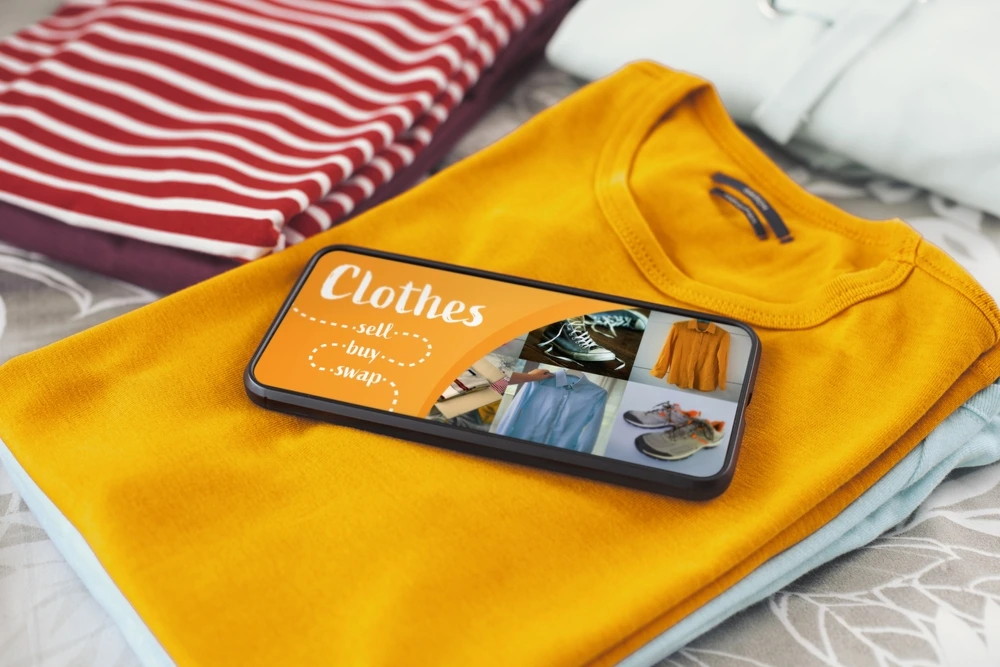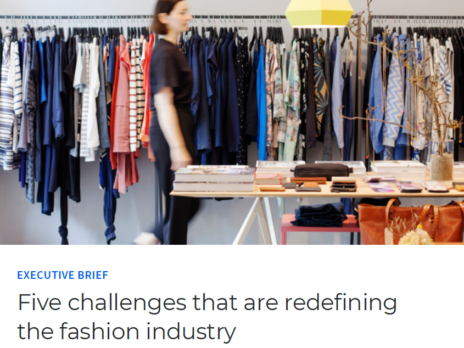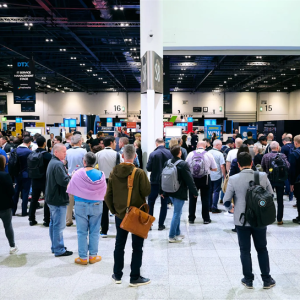
Infor’s industry solution director of fashion, Helene Behrenfeldt, sees five key challenges fashion brands must address if they are to secure their future in a rapidly changing environment: reinventing the bricks-and-mortar space; inventory management concerns; greater requirements in sustainability and regulation; new consumer demands and multiple channels to market.

“Things have settled down post-pandemic, but by no means can these companies relax,” says Behrenfeldt. “They should now assess whether they have up-to-date systems of record to manage change, as physical and digital models merge and new business areas evolve to prolong the life cycle of products.”
Increased number of channels to market
In regard to offering an omnichannel approach to the market, the fashion industry was already ahead of most sectors when distribution models suddenly met unprecedented disruption – “Transformation was simply accelerated by the pandemic,” says Behrenfeldt.
From legacy distribution channels like wholesale and bricks-and-mortar stores to the abundance of digital platforms, customers now have multiple streams of access to products, including D2C, which bypasses retailers altogether. This presents the challenge for fashion brands that could be spreading themselves too thin along this landscape of different sales touchpoints, where inventory management could help to redistribute stock more reflectively of customer demand.
Digital transformation is disrupting traditional channels further within those spaces – from websites, retail shops and the wholesale channel, and now to marketplaces for resell. Behrenfeldt points to H&M’s acquisition of Sellpy, a digital start-up that handles the entire sales process, from picking up goods from sellers’ homes to photographing, selling and shipping to demonstrate the consolidation between big established brands looking at these digital-focused companies in this area.
This helps traditional companies to pivot to more flexible operations and models and improve inventory management while extending product life cycles. In 2021, H&M announced that Sellpy would branch out to 20 new countries, as growth in sustainable fashion and resell continued worldwide during the pandemic.
“They realised the move into providing a sustainable service, next to selling fast fashion that typically has a shorter lifetime and often leads to waste,” says Behrenfeldt. “With a circular flow of products comes a higher focus on a reverse supply chain, in order to manage repair, resell and other activities promoting circularity.”
Inventory management concerns
But the increase in omnichannel is contributing to continued inventory management challenges for fashion brands even now. Too much out-of-season stock in physical stores and warehouses means companies can’t get rid of products, without the wasteful expenses of burning them or marking them down in outlets with lower margins as a result.
To counter this, Behrenfeldt highlights the focus on more ‘fluid fashion’ from McKinsey’s State of Fashion 2023 report – more genderless, seasonless products that are more versatile and inclusive to a wider consumer pool with a longer lifespan. This would help limit the non-usable inventory of products.
A sophisticated, fashion-focused ERP can also give clear visibility on supply chains and inventory, which encourages Behrenfeldt, in light of Infor’s decision to partner with Foresight Retail earlier this year. ERPs can offer sophisticated ways to assess data through trends and scenarios, helping brands with better planning to minimise waste while improving inventory management as it tells them which channel is best to shift inventory to depending on where the customer demand is.
Shifting consumer demands
But customers are now savvier about where they purchase fashion, too – a big label or good product is no longer enough alone to turn their heads. The huge growth in e-commerce during Covid-19 put a greater demand on digital channels and the capabilities for shopping online. Customers want increased visibility on the sale-to-delivery process with sustainability in mind.
Now that customers have more power to buy both new or preloved products, companies also need to create that bond between brand and consumers through the promise of quality, sustainability and forming a bond they trust.
“With an appetite for uniqueness, personalisation and consumer intimacy, it’s clear consumers want to feel special, to connect to the brand now,” continues Behrenfeldt.
More buyers are now opting to buy from vintage, second-hand and repairing platforms, or ‘recommerce’, such as Depop and Vinted, for better quality and connection to a brand or clothing rather than the temporary fix of fast fashion. This offers an opportunity for companies to shift focus towards the end-of-use or end-of-life phase of textiles, contributing to the circular economy.
Regulatory and ethical concerns
Legislation and regulation are also driving higher demands for sustainable products, particularly with new demands in climate reporting, as it becomes mandatory for companies of almost all sizes. Companies can no longer hide beneath surface-level pledges to be greener or more ethical – they must prove it. Regulations across territories are challenging fashion brands on transparency, and if companies want to trade in those areas, they must comply with those regulations.
“It’s all about data. It is possible to collect a lot of data around the product supply chain, production order quantities, quality, composition, country of origin, how many times it was repaired, for example,” says Behrenfeldt. “We believe brands and retailers must comply. It will take a hit on the brand if they don’t since consumers won’t accept a no-action response.”
However, this can be turned into an opportunity, where companies can prove with hard data points the progressive or effective contributions they are making towards sustainability in their operations. This can also help to bolster brand perception, as a brand that customers can trust.
“If you don’t tell your story, someone else will,” says Helene. “If you take control of telling your story, it creates an opportunity and you will be in control of how people perceive your brand.”
Reinventing brick-and-mortar locations into an experience
Brand storytelling can also be developed by redefining the purpose of physical stores as an opportunity for customers to experience the brand. More companies are using their physical retail stores in a new context since the pandemic, such as product showrooms and collaborative community spaces to tell the story around the brand, offering customers the brand experience.
Physical locations have limitations that online platforms do not when it comes to selling products, such as space hosting stock, but while companies can use digital features to create a consumer experience online, there are exciting opportunities that are unique to a physical space.
This hybridity allows brands to minimise inventory issues while building longer-term, trusting connections with customers using a personal touch, and maintaining increased channels to market.
“The traditional store concept has changed; now it’s about the brand experience to create customer intimacy, giving customers more reasons to stay loyal,” says Behrenfeldt. “A brand may showcase their collections along with an offering of other services such as coffee shops and working areas offered in the same space. That is unique to what can be done online, to provide the customer with that personal touch and experience.”
In a fast-changing and increasingly complex landscape, nurturing customer loyalty as fashion brands navigate these universal, interlinked challenges will help them to unlock new strategies and opportunities for a tech-savvy, sustainability-focused future.








